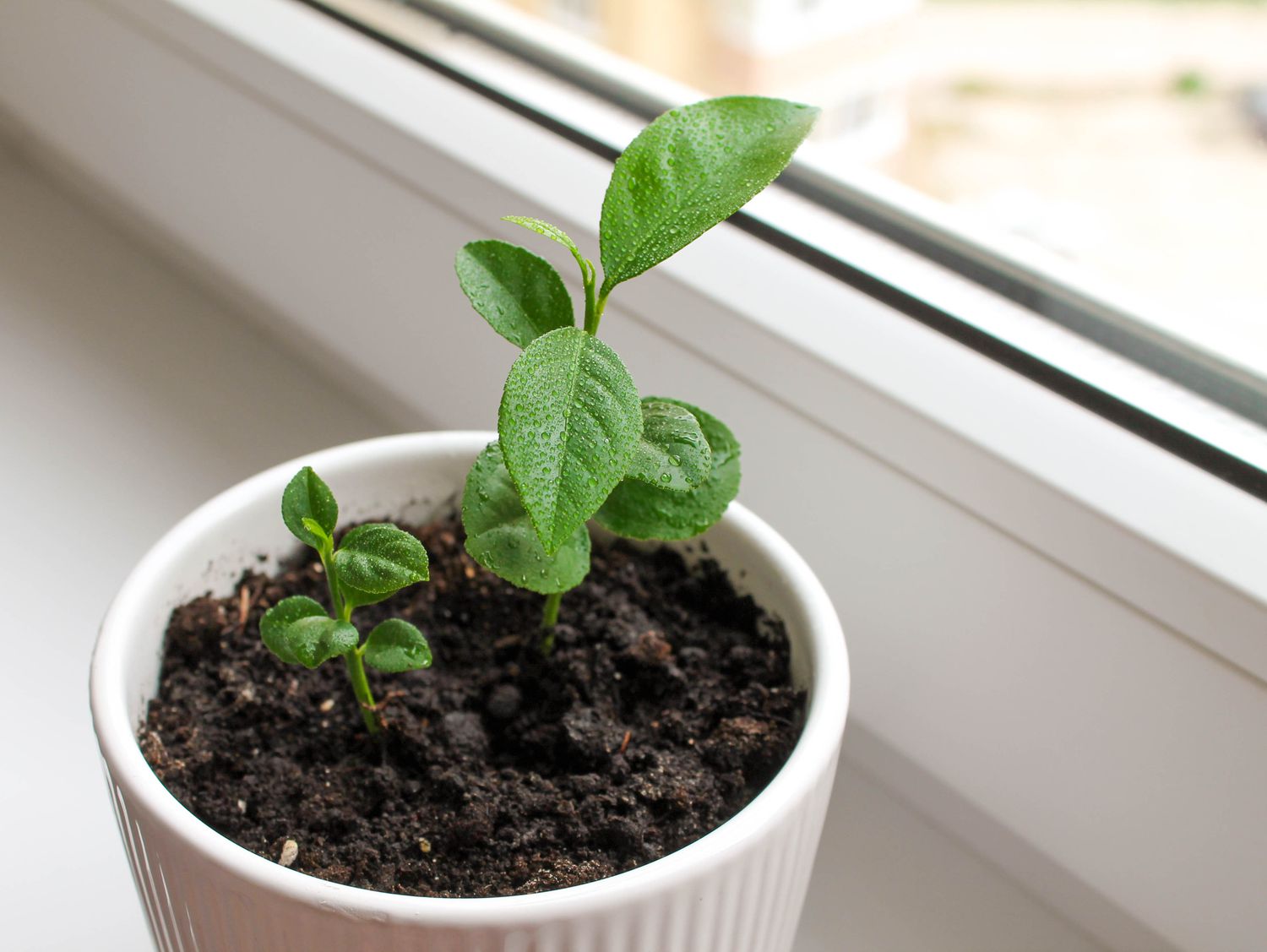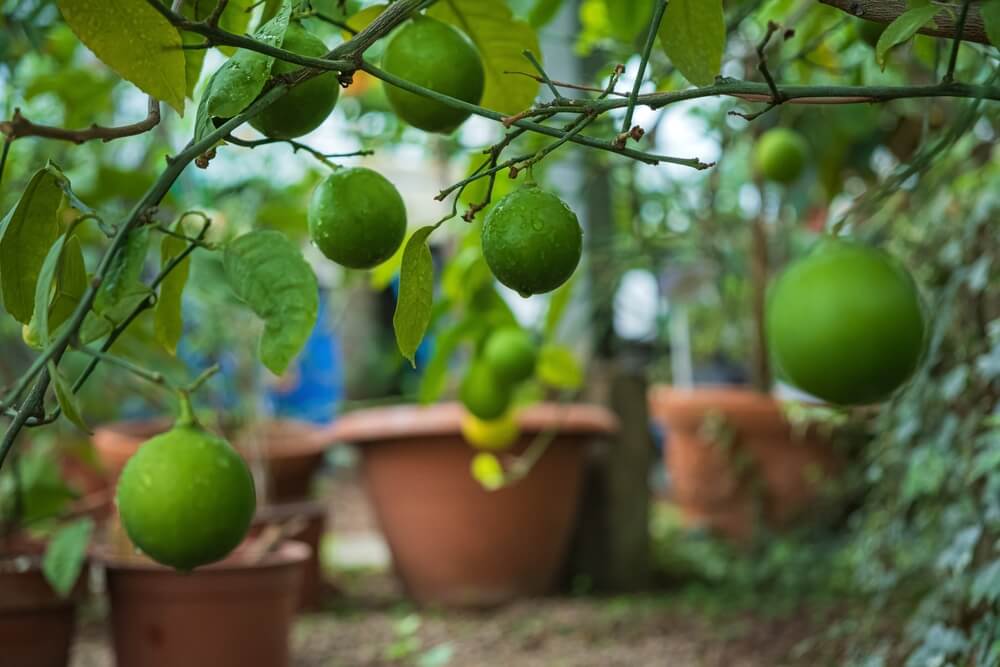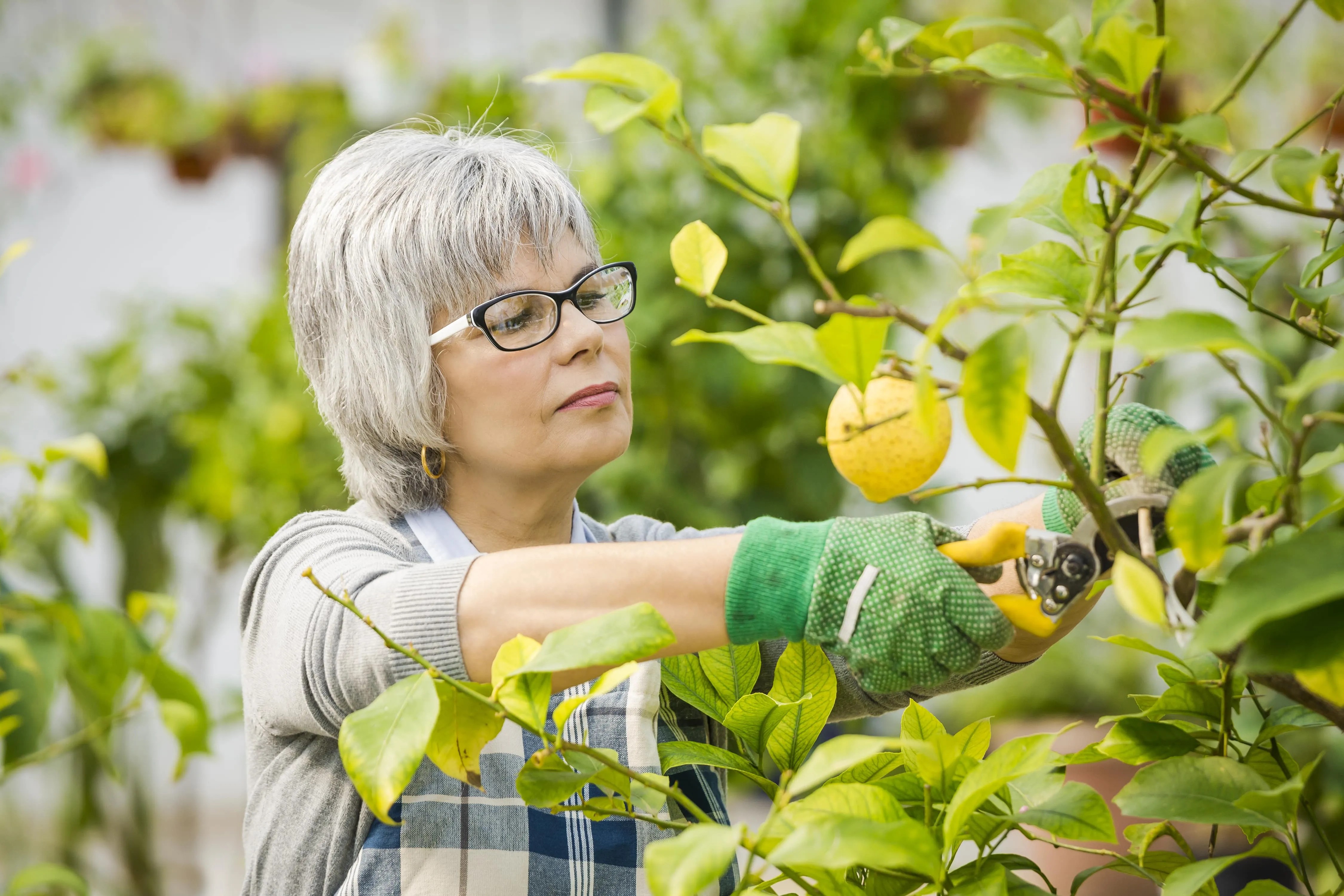Lemon Tree Growth Stages - Nurturing Your Citrus Garden
Explore the fascinating journey of Lemon Tree Growth Stages, from seedling development to fruit production. Learn how to nurture your lemon tree through each stage for a bountiful harvest.
Author:Xander OddityReviewer:Dr. Felix ChaosphereMar 01, 202463.8K Shares851K Views

Lemon trees are not only prized for their vibrant fruit but also for the beauty they bring to gardens and landscapes. Understanding lemon tree growth stagesis essential for nurturing them and ensuring a bountiful harvest.
We'll explore lemon tree growth stages, factors influencing their growth, tips for promoting healthy development, and answer frequently asked questions about lemon tree care.
Germination
Lemon tree seeds are small, smooth, and have a milky white hue. If the environment is optimal, they can germinate into a new plant in 5 to 7 days. At this stage, you will observe the emergence of roots and tiny leaves as your lemon plant begins to form.
Seedling Stage
When your lemon seed has germinated properly, you will notice small green leaves emerge from the soil. The sprouts will continue to grow and produce new leaves, eventually forming established stems and leaves.
It's crucial to note that your plant is vulnerable during this early period and requires enough of water, especially during the hot summer months. After three months, move the seedling to a full-sun spot in your garden; lemon plants require plenty of sunlight to thrive.
Youth & Maturity
As the small seedling grows, it will eventually mature into a sapling, and it is critical to protect it from cold temperatures during this stage. Over time, the sapling will produce denser leaves, stronger trunks, and thorny branches.
Your lemon tree has developed into a mature plant with a strong trunk and branches! Nonetheless, you must take careful care of it to guarantee that it remains healthy during the lemon tree growth phase.
Ensure that it receives enough sunlight, nutrients, and water. However, be careful not to overwater it, since this might cause root rot and damage your plant. Although they are not frost-hardy, mature lemon trees can tolerate colder temperatures.
Flowering And Fruiting
Your tree should start producing buds during the winter after two years of growth. Then, as temperatures rise in early spring, stunning blossoms will emerge from the flower buds, producing small white blooms.
Lemon trees are self-pollinating, which means they do not require other pollinators to produce fruit. As the blossoms fade, young lemon fruits will emerge, eventually ripening into luscious delicacies.
Remember that your lemon tree need an adequate amount of water to produce those delectable fruits. If you're cultivating a container lemon tree, be sure the pot has enough drainage to avoid root rot.
Ripening Lemons
Lemons require roughly 4 months to develop. You'll want to maintain your citrus tree moist and fertilize it regularly. Also, be aware of pests, particularly aphids, which can injure your tree and reduce fruit yield.
If you see an infestation, clip any infected branches or leaves right away to prevent it from spreading further, and use pesticides as needed. Mature lemons have smooth, yellow skin and are oblong-shaped.
Fruit size varies depending on growing conditions and the sort of lemon tree you have. If you come across a huge lemon with thick skin, it could have sprung from a grapefruit or tree rootstock. Keep a watch out for these distinct kinds among your lemon harvest!
Harvesting The Lemons
Wait until lemons are fully ripe before harvesting. Green lemons are still unripe; picking them too soon prevents them from continuing to grow and mature.
Instead, wait patiently until the lemons have turned a deep, brilliant yellow color. At that moment, you can securely pick them and enjoy the results of your efforts!
Difference Between Immature And Mature Lemons
- An immature lemon is one that has not grown to full size or matured completely. Immature lemons are typically green in color, smaller in size, and have a tarter flavor than mature lemons.
- A mature lemon, on the other hand, is one that has grown to full size and turned yellow. Mature lemons are larger than immature lemons, have a sweeter flavor, and are generally juicier. A ripe lemon has smoother skin than an immature lemon. To provide the finest flavor and texture, lemons should be harvested when fully ripe.
Drying
Drying occurs when lemons are left unpicked on the tree, causing them to become discolored, withered, and eventually detach. As lemons mature without harvesting, they lose their vibrant color and firm texture, resulting in wrinkled, dry skin. Once fully dried, the lemons naturally detach from the tree, signaling the end of their life cycle.
Despite the drying process, lemon trees continue to produce fruit until reaching maturity. Growers typically collect the seeds from dried lemons for future planting, ensuring the cycle of fruit production continues.
It's essential for growers to monitor their lemon trees regularly, harvesting fruit promptly to maintain quality and prevent unnecessary drying. By practicing proper care and harvesting techniques, growers can enjoy abundant harvests of fresh, flavorful lemons while promoting the health and longevity of their lemon trees.
Factors Influencing Lemon Tree Growth
- Environmental Factors - Lemon trees thrive in warm, subtropical areas with mild winters and scorching summers. They prefer 70-85°F (21-29°C) and require frost protection.
- Soil Conditions- Lemon trees thrive in well-drained, slightly acidic soil with a pH of 5.5 to 6.5. Adding organic matter to the soil can increase its structure and fertility.
- Watering and Irrigation- Regular watering is essential for lemon tree health, especially during droughts or excessive heat. However, overwatering can cause root rot, so it's critical to achieve a balance.
- Sunlight Exposure- To thrive, lemon trees require at least 6-8 hours of direct sunlight each day. Insufficient sunshine might lead to low fruit output and overall growth.
- Pruning and Maintenance- Regular pruning helps the lemon tree retain its shape and size, increases air circulation, and removes dead or diseased branches. Furthermore, regular fertilization and pest management are critical to overall tree health.
Tips For Promoting Healthy Growth
- Proper Planting Techniques- When planting a lemon tree, choose a sunny location with well-draining soil. Dig a hole twice as wide and deep as the tree's root ball and backfill with amended soil.
- Fertilization- Fertilize lemon trees with a balanced citrus fertilizer according to package instructions, typically in early spring and late summer. Avoid over-fertilization, as it can lead to nutrient imbalances.
- Pest and Disease Management - Monitor lemon trees regularly for signs of pests such as aphids, scale insects, and citrus leaf miners. Treat infestations promptly with organic insecticidal soap or neem oil.
- Regular Monitoring and Care- Inspect lemon trees regularly for signs of stress, nutrient deficiencies, or disease. Adjust watering and fertilization as needed to maintain optimal health.
- Pruning for Optimal Growth- Prune lemon trees in late winter or early spring before new growth begins. Remove dead, damaged, or crossing branches to improve air circulation and promote new growth.
Stages Of A Lemon Tree Pictures
FAQs About Lemon Tree Growth
How Long Does It Take For A Lemon Tree To Bear Fruit?
The time it takes for a lemon tree to bear fruit depends on various factors such as the tree's age, growing conditions, and variety. In general, dwarf lemon trees may start producing fruit within 1-3 years, while standard-sized lemon trees may take 3-5 years or longer.
What Are Some Common Pests And Diseases That Affect Lemon Trees?
Common pests that affect lemon trees include aphids, scale insects, citrus leaf miners, and spider mites. Diseases such as citrus greening, citrus canker, and root rot can also pose significant challenges to lemon tree health.
Can Lemon Trees Grow Indoors?
Yes, lemon trees can be grown indoors in containers, provided they receive adequate sunlight, humidity, and proper care. Dwarf lemon tree varieties are particularly well-suited for indoor cultivation.
When Is The Best Time To Prune A Lemon Tree?
The best time to prune a lemon tree is in late winter or early spring before new growth begins. Pruning during this time helps stimulate new growth and removes dead or diseased branches, promoting overall tree health and productivity.
How Often Should Lemon Trees Be Watered?
Lemon trees should be watered deeply but infrequently, allowing the soil to dry out slightly between waterings. In general, water young lemon trees 1-2 times per week, adjusting the frequency based on weather conditions and soil moisture levels.
Conclusion
Growing lemon trees can be a gratifying experience, not only giving fresh, homegrown fruit but also adding beauty and scent to your outdoor or indoor garden. Understanding lemon tree growth stages and proper care with maintenance procedures will allow you to cultivate healthy, prolific lemon trees that will survive for many years.
Lemon Tree Growth Stages encompass germination, seedling development, vegetative growth, flowering, fruit development, and harvesting. So, roll up your sleeves, get your hands dirty, and begin the journey of growing your own lemon tree garden. Remember that with patience, devotion, and a little TLC, the benefits will be as sweet and tangy as the fruits of your labor.

Xander Oddity
Author
Xander Oddity, an eccentric and intrepid news reporter, is a master of unearthing the strange and bizarre. With an insatiable curiosity for the unconventional, Xander ventures into the depths of the unknown, fearlessly pursuing stories that defy conventional explanation. Armed with a vast reservoir of knowledge and experience in the realm of conspiracies, Xander is a seasoned investigator of the extraordinary.
Throughout his illustrious career, Xander has built a reputation for delving into the shadows of secrecy and unraveling the enigmatic. With an unyielding determination and an unwavering belief in the power of the bizarre, Xander strives to shed light on the unexplained and challenge the boundaries of conventional wisdom. In his pursuit of the truth, Xander continues to inspire others to question the world around them and embrace the unexpected.

Dr. Felix Chaosphere
Reviewer
Dr. Felix Chaosphere, a renowned and eccentric psychiatrist, is a master of unraveling the complexities of the human mind. With his wild and untamed hair, he embodies the essence of a brilliant but unconventional thinker. As a sexologist, he fearlessly delves into the depths of human desire and intimacy, unearthing hidden truths and challenging societal norms.
Beyond his professional expertise, Dr. Chaosphere is also a celebrated author, renowned for his provocative and thought-provoking literary works. His written words mirror the enigmatic nature of his persona, inviting readers to explore the labyrinthine corridors of the human psyche.
With his indomitable spirit and insatiable curiosity, Dr. Chaosphere continues to push boundaries, challenging society's preconceived notions and inspiring others to embrace their own inner tumult.
Latest Articles
Popular Articles




